Spain has a lot going for it. You’ll find stunning architecture, rich history, postcard-perfect coastlines, and all the jamón your heart desires. But if you’re flying in from Singapore, some local norms might catch you off guard, especially when it comes to food, daily routines, and opening hours.
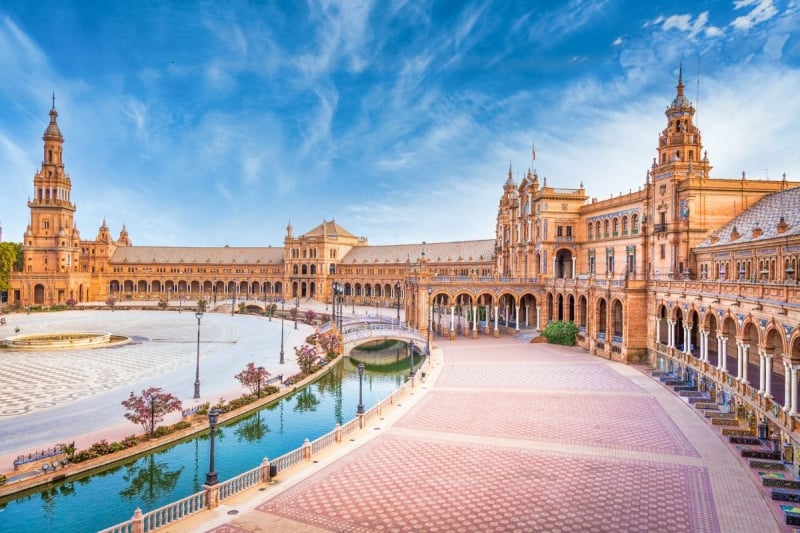
Image Credit: paologallophoto via Canva Pro
This guide is written with Singaporean travellers in mind. It covers what you should actually know before visiting Spain, from mealtimes and weather prep to the curious lack of iced water at lunch. These differences might seem small at first, but they can quickly derail a good plan if you’re not prepared. Here’s how to avoid confusion and enjoy the trip like a local.
Also read: Barcelona Travel Guide: Iconic and Hidden Gems I Fell in Love With
Spain’s rhythm is not your rhythm
1. Dinner starts late
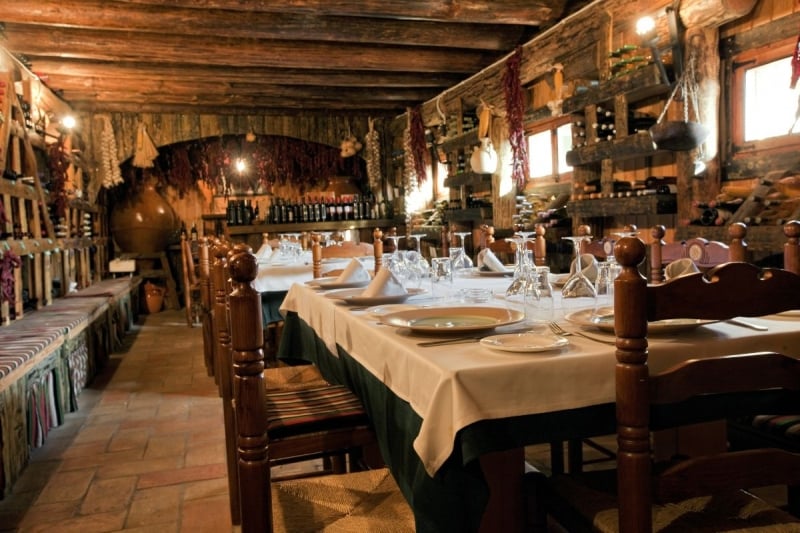
Image Credit: ManuelVelasco via Canva Pro
In Singapore, dinner at 6.30 pm is the norm. In Spain, that’s considered awkwardly early. Most restaurants don’t open until around 8 pm, and locals usually start trickling in closer to 9 pm or later. During summer, people often eat past 10 p.m. because it’s still hot well into the evening.
This late timing isn’t just about preference. It’s tied to Spain’s unique workday, which often includes a long midday break and a later end time. It also has to do with the country’s warm climate, especially in the south, where meals are pushed later to avoid the heat. If you’re used to early dinners, be prepared to adjust. Have a snack in the late afternoon, and don’t expect restaurants to be lively before sundown.
2. Shops close midday (even pharmacies and supermarkets)
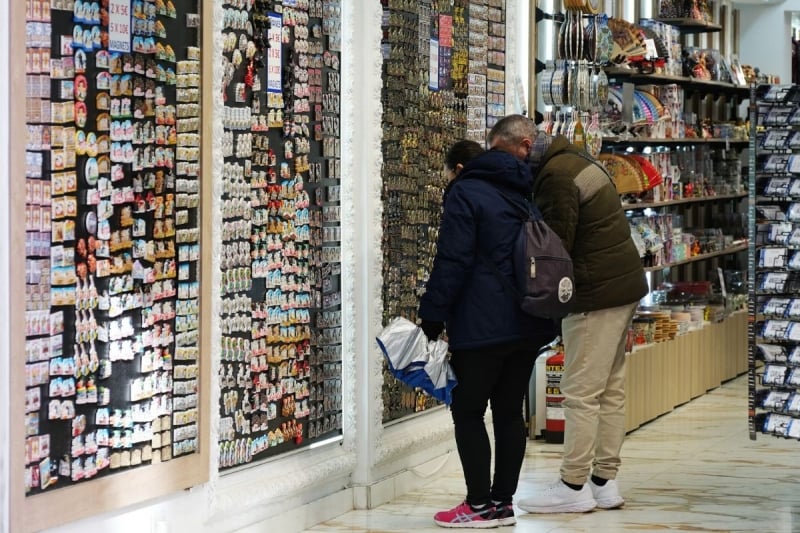
Image Credit: Dmitrii E. | Unsplash
You might think everything’s closed for good, but give it a few hours. Many shops, including pharmacies, convenience stores, and even some supermarkets, close in the afternoon, usually from around 2 pm to 5 pm. This isn’t a full siesta with everyone sleeping, but it is a widespread break in the workday, especially outside the big cities.
In smaller towns or family-run shops, this break can be even longer. While big chains may stay open, you shouldn’t count on it. Plan your errands or shopping before lunch or after 5 pm, and don’t assume you’ll be able to grab Panadol or snacks mid-afternoon.
3 August isn’t the best time for cities like Madrid
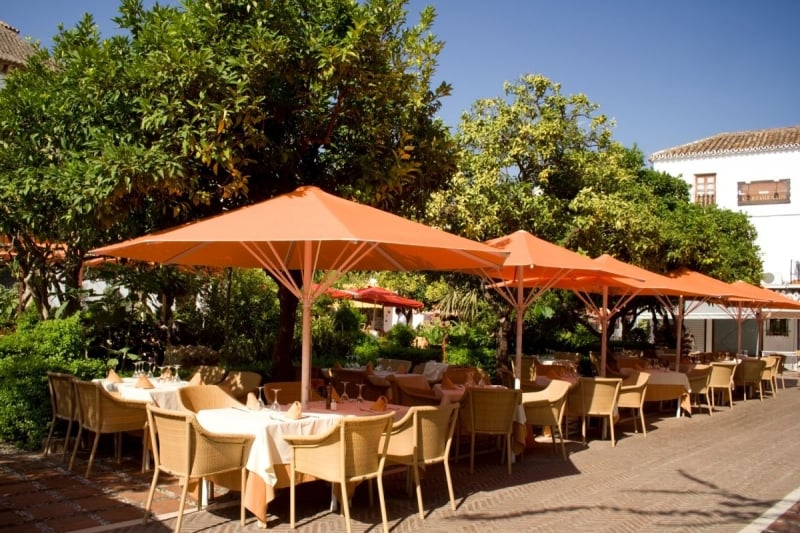
Image Credit: swilmor via Canva Pro
In August, many locals leave the cities for the coast, especially in places like Madrid and Seville. You might find entire neighbourhoods where cafes, bars, and even boutiques are temporarily shut. The heat can also be intense, often climbing above 40°C in the south.
If you’re visiting Spain in summer, consider heading for northern cities like San Sebastián or coastal towns along the Atlantic and Mediterranean. These areas stay lively and offer slightly cooler temperatures, along with great food and beaches.
Food in Spain
4. Menú del día is your best lunch deal
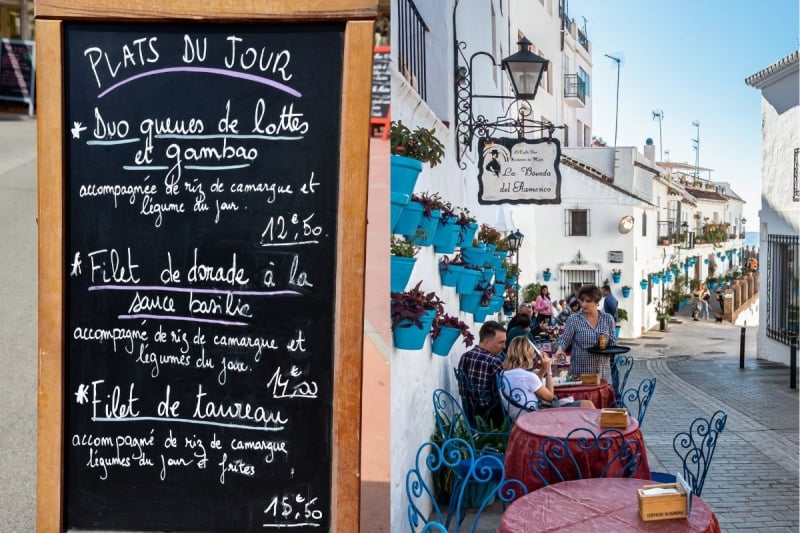
Image Credit (L-R): vanbeets via Canva Pro; Simon Hermans | Unsplash
Instead of hunting for hawker-style variety, look out for signs that say menú del día outside restaurants. This set lunch usually includes a starter, a main, dessert or coffee, and sometimes even wine or water — all for around €10 to €14 (S$14 to S$20).It’s served only during lunch hours (about 11.30 am to 4.30 pm), and portions are generous.
Locals take lunch seriously, and this meal is often the biggest of the day. Tap water is commonly served without extra charge. This is one of the easiest and most affordable ways to try traditional Spanish dishes without having to decipher a long à la carte menu.
5. Tapas are fun, but not a full meal
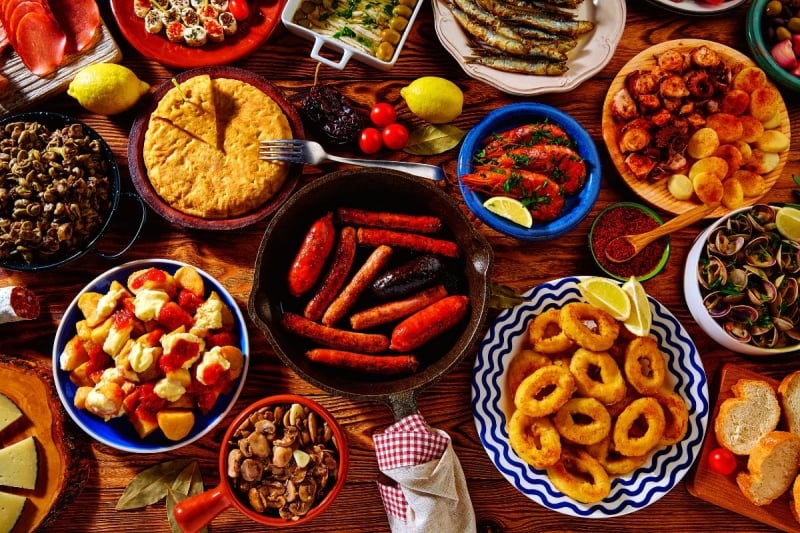
Image Credit: Lunamarina via Canva Pro
Tapas are small dishes designed for snacking and sharing. Think fried calamari, olives, meatballs, or croquettes. You’ll often see them paired with a drink, and in some cities, like Granada, tapas are even served free with alcohol.
But don’t go in expecting a balanced meal. Tapas are often oily, salty, and heavy on meat or fried ingredients. It’s easy to over-order and still feel like something’s missing. If you’re looking for something more substantial or less rich, consider pairing tapas with a salad, or choose a sit-down meal like the menú del día instead.
6. Don’t eat while walking and don’t rush meals
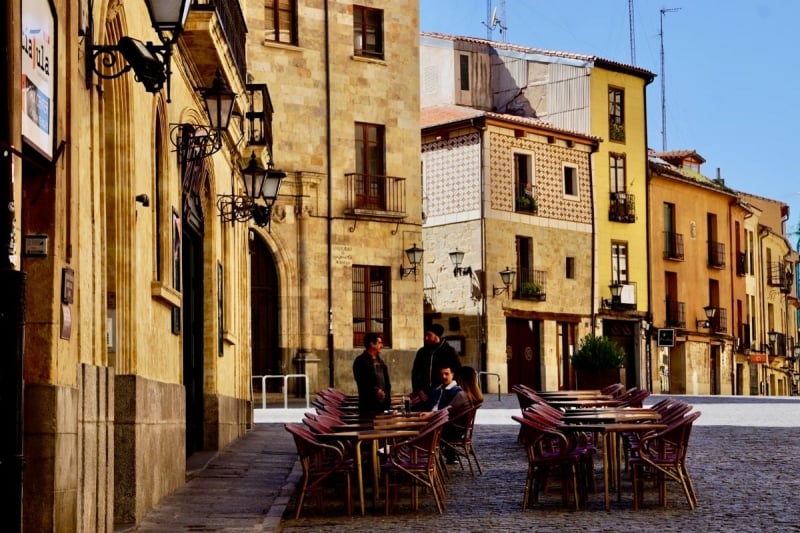
Image Credit: Beth Macdonald | Unsplash
In Spain, food is meant to be enjoyed slowly and socially. It’s rare to see locals eating while walking, even if it’s just a sandwich. Meals are for sitting down and taking your time, whether you’re at a roadside cafe or a proper restaurant.
If you’re used to grabbing toast or kopi on the go, this might feel strange at first. But it’s part of the culture. Even coffee is usually drunk at the bar rather than taken to go. Slow down, and use meals as a chance to rest, chat, and watch the world go by.
Getting around and paying for things in Spain
7. Card works almost everywhere, but coins come in handy
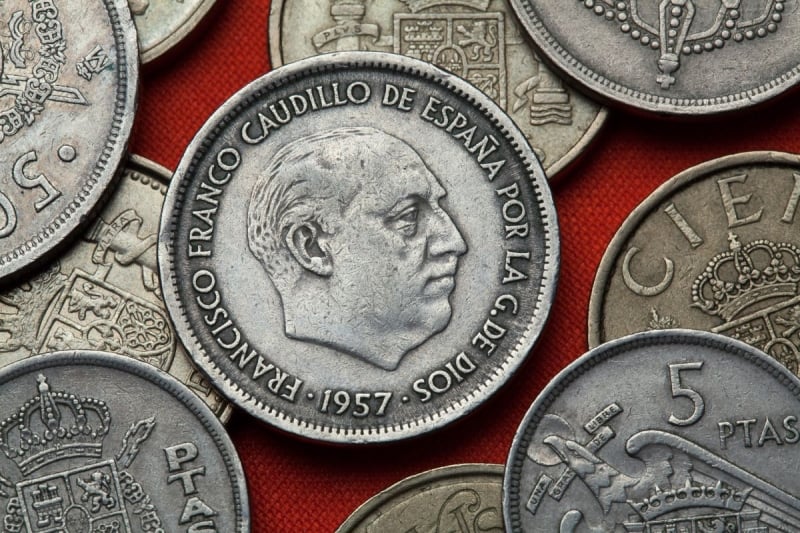
Image Credit: wrangel via Canva Pro
You won’t need to carry much cash in Spain, especially in cities like Madrid, Barcelona, or Seville. Most restaurants, shops, and transport options accept credit and debit cards, including contactless payments. That said, it’s still useful to keep a small stash of €1 and €2 coins (S$1.50 to S$3).
Some taxis, public toilets, vending machines, and small-town cafés might not accept cards or might have a minimum spend. If you’re paying cash, avoid large notes like €50 (~S$75), change can be hard to come by, especially in the morning.
8. Trains are fast and reliable, but buses… less so
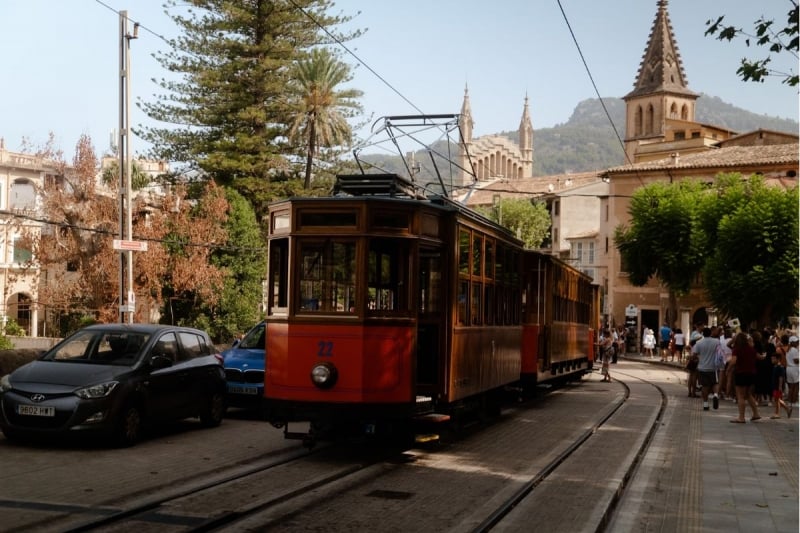
Image Credit: Victor Oonk | Unsplash
Spain’s high-speed AVE trains are one of the best ways to travel between cities. You can get from Madrid to Barcelona or Málaga in about three hours. Book tickets in advance on apps like Renfe or Trainline to get better prices.
Local metro and tram networks are generally clean and efficient, especially in cities like Madrid, Barcelona, and Valencia. Buses, on the other hand, can be less predictable. Intercity buses may not run frequently, and schedules aren’t always clear unless you check at the station. If you’re relying on long-distance buses, give yourself extra buffer time.
Final tips for a smoother trip
9. Pack for sun, cold, and surprise rain
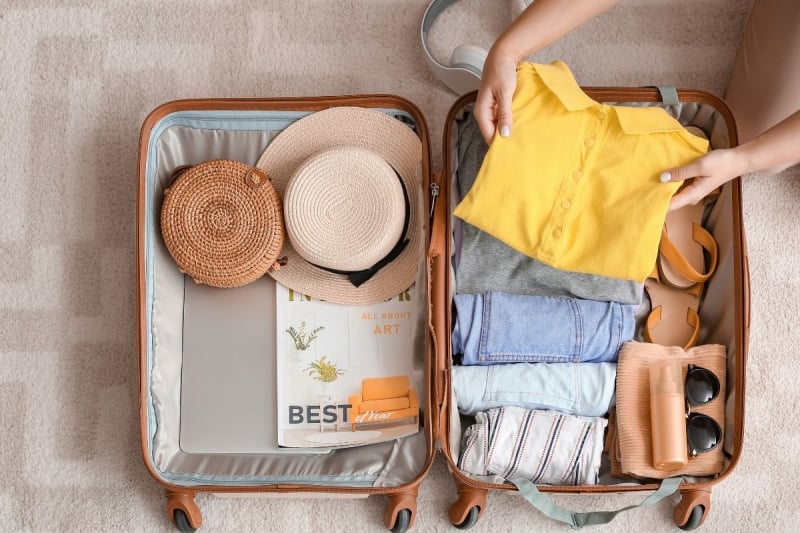
Image Credit: pixelshot via Canva Pro
Spain isn’t hot and dry all year, especially if you’re heading north. Cities like Bilbao and Santiago de Compostela can feel damp and chilly even in late spring. Meanwhile, summer in places like Seville or Madrid can hit over 40°C. You’ll want to pack layers, sunscreen, and a hat, no matter when you go.
Rain is common in northern regions like Galicia and the Basque Country, so throw in a light waterproof jacket or umbrella if you’re exploring those areas.
10. Bring a bottle, and know what to dial in emergencies
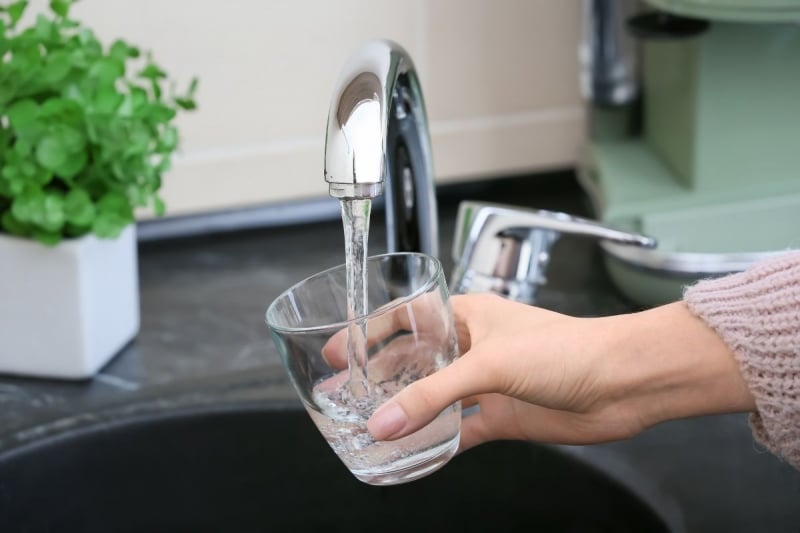
Image Credit: pixelshot via Canva Pro
Tap water in Spain is safe to drink. Carrying a refillable bottle will save you money and make it easier to stay hydrated, especially in summer when the sun sets late and it’s easy to be outdoors for hours.
In an emergency, call 112. The line works even without a SIM card, and operators usually speak English.
11. One small cultural heads-up
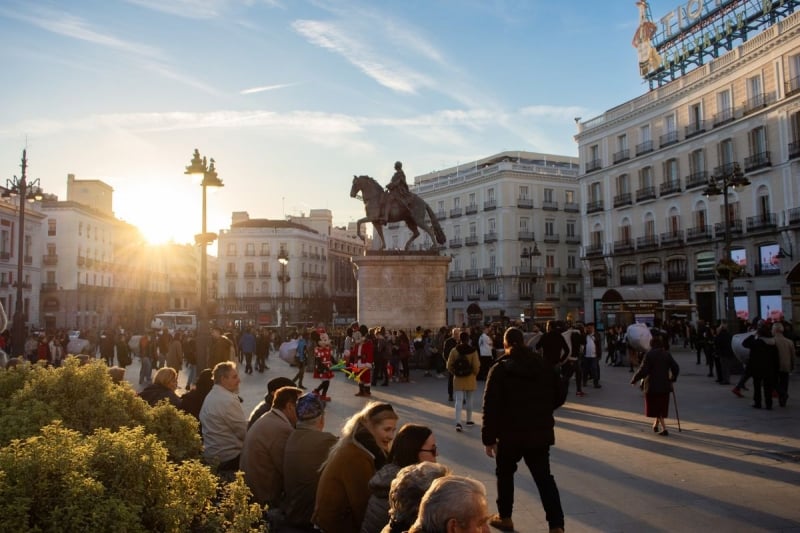
Image Credit: Alex Moliski | Unsplash
People in Spain often greet each other in passing, whether it’s in lifts, at counters, or in small shops. If someone says “hola” or “buenas,” it’s not weird. Just greet them back!
Also read: Spain Orders Airbnb to Remove 65,000 Listings: Here’s What Travellers Should Know
Final thoughts
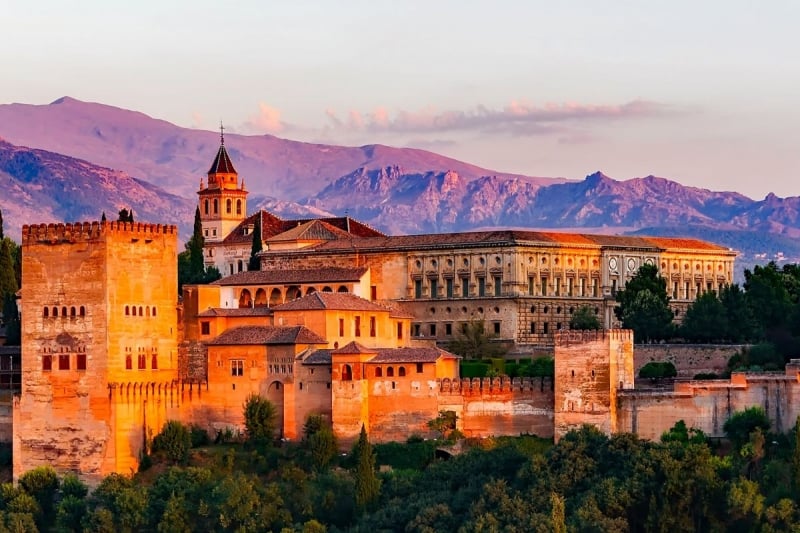
Image Credit: 12019 via Canva Pro
Travelling in Spain might feel a little disorienting at first, especially if you’re used to Singapore’s efficiency, early meals, and always-open convenience stores. Things run slower here. Days start later, meals last longer, and plans often give way to conversation.
But once you settle into the rhythm, you’ll start to see the charm. Spain rewards those who take their time, whether you’re lingering over lunch, wandering through old streets, or watching locals gather in the plaza after sunset. Let go of the need to do everything quickly, and let the country show you how to live a little differently.




